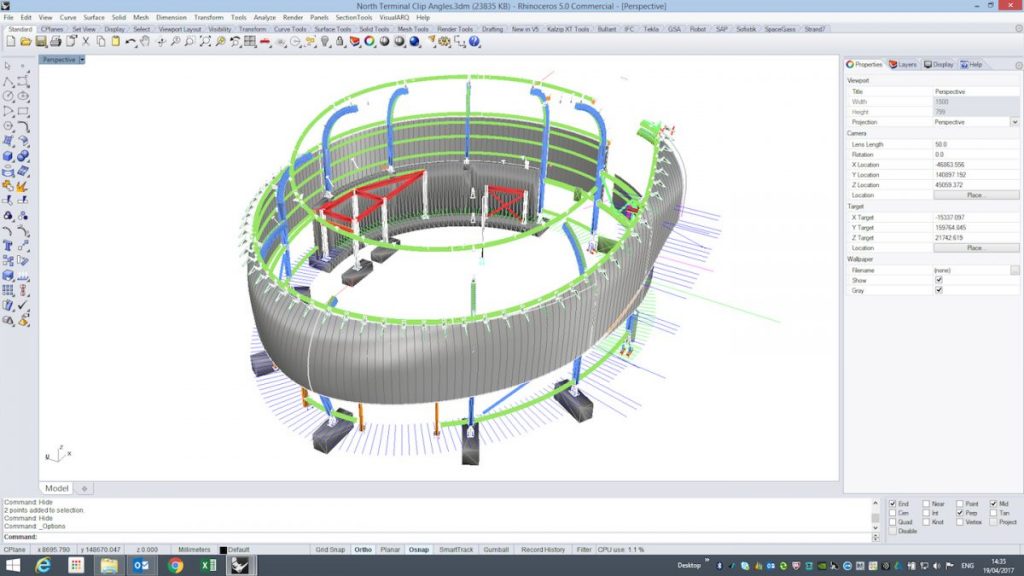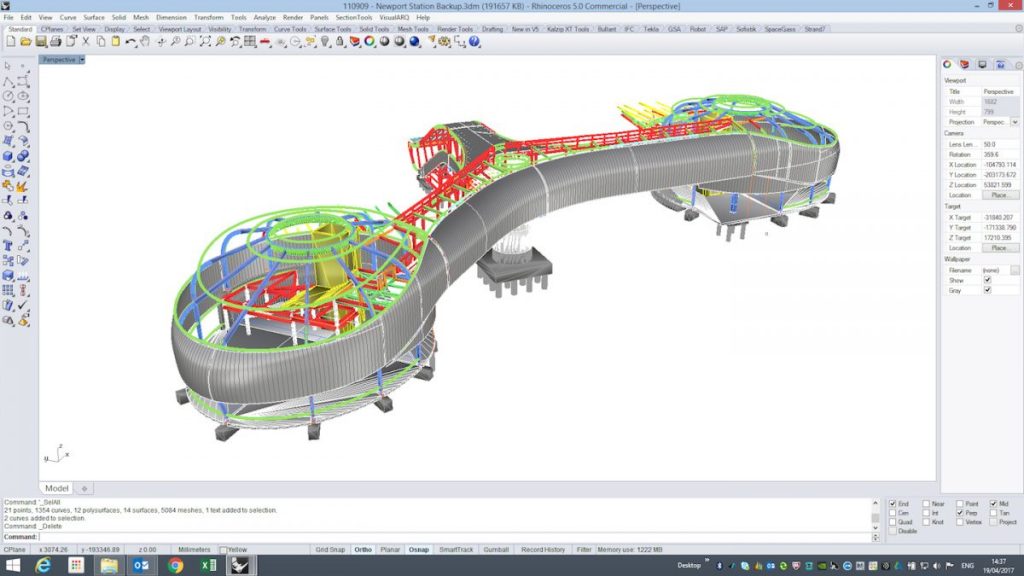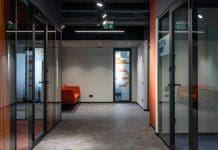3D modelling techniques and the ethos of BIM were present within the construction industry before its large-scale rollout says Kevin Turton, Design Manager at Tata Steel
Undoubtedly, BIM is an ambitious and progressive step forward for the UK construction industry. As the sector-wide implementation of BIM Level 2 continues and companies decide the best path forward for the creation of BIM objects, it is worth taking a step back and considering how the principle tenets of BIM and 3D modelling are not alien to our oft-maligned industry.
The aim of effective Building Information Modeling (BIM) is to enable multi-disciplinary integration and collaboration, allowing for any design issues to be seamlessly detected and resolved throughout any given project.
Utilising BIM
For those entering into the BIM arena for the first time, it can feel like unchartered territory. However, for many companies, including Tata Steel, the principles of collaboration and use of 3D modelling and technological innovation in the design and construction stage of projects have been established methods of operation long before the term BIM was ever coined.

One such past project where this was particularly resonant was the construction of Newport Train Station in Wales. Completed in 2011, when the UK Government launched its BIM strategy, this unique and challenging project involved the revolutionary use of sophisticated 3D modelling software and mass digital collaboration between Tata Steel and key stakeholders across the supply chain.
One of the most crucial considerations of this stunningly designed project was to build the station with minimal disruption to the operational railway line.
Working in conjunction with the engineers, contractors and key suppliers, it was determined that the solution lay in producing pre-clad modules on-site so everything above and between the tracks could then be lifted into place and made secure in the very short time necessary to keep track closure to a minimum.
By dividing the very long footbridge into two main spans, separate modules were constructed for each span and a third module for the staircase. The modules specified a structural steel frame clad in aluminium standing seam with a continuous band of pneumatic Ethylene tetrafluoroethylene (ETFE) cushions at a high level on the footbridge. The three fully clad modules were then lifted onto specially pre-prepared bearing pads before being secured into position over a period of just two days.
Integral to the project’s success, due to its complex nature, was Tata Steel’s use of then ground-breaking 3D modelling software which significantly aided the installation of over 1,000 individual Kalzip® aluminium standing seam sheets as well as Kalzip® XT profile sheets of various shapes. The Kalzip® XT profile sheets were used for significant parts of the link footbridge and concourse buildings where the aluminium cladding is curved both on plan and in section.

Using both Rhino 3D and Autocad software, 3D modelling of the building’s cladding was created. These tools enabled the nuanced and detailed aspects of the surface’s dimensions, curves and surfaces to be visualised and shared with the project architect and across the supply chain. This collaborative action, which would have been impossible using traditional methods, allowed the design, approval and ultimately the bespoke manufacture of the profile sheets to be conducted in a timely, efficient and seamless manner.
The inherent versatility of Kalzip® XT profiled sheets combined with Tata Steel’s sophisticated computer modelling software and advanced computer controlled roll-forming technology then made it possible to transform computer generated designs and structural principles into reality. Kalzip® XT is capable of achieving a wide range of complex shapes from ellipses, cones, prisms, spherical caps and other convex/concave classical geometries to more free-flowing contemporary designs.
Encircled by triangular faceted planar glazing at ground level, the Kalzip® clad concourse buildings contain ticketing facilities, retail outlets, lifts and expansive staircases under ETFE roofs to provide optimum daylight – the ETFE cushions follow the spiral form of the building and culminate with a circular oculus cushion at the highest point. The adjacent Kalzip® roofed ancillary buildings contain waiting rooms and toilets together with a variety of offices for the rail station and associated staff members.
The impressive array of bespoke fabrications designed, manufactured and supplied by Kalzip® included complex curved gutters, downpipes, fascia and soffit panels, tapered louvres, façades and numerous curved aluminium elements in pre-coated PVF² coil and PPC sheets coated to RAL 9006 and RAL 7015. Within this requirement for literally thousands of mill finish, stucco embossed, stainless steel and colour coated items, Kalzip® was also able to satisfy the architect’s request for bright yellow panels coated to RAL 1018 with slotted perforations to encase the lift shaft located in the middle of the link bridge.
Kalzip® Fabrications worked very closely with CDW, Grimshaw and Atkins which resulted in a number of innovative, cost-saving solutions to many challenging design issues that were faced in the redevelopment of the new station that has understandably become an iconic landmark building for the city of Newport.
BIM may feel like a relatively new concept to some in construction, but its principles of collaboration and innovation have a long history within the industry. As pioneers of BIM before it was officially given its name, companies such as Tata Steel have been pushing the technological and logistical boundaries of construction for decades and stand in a unique position as BIM adoption is rolled out across the industry.
Kevin Turton
Design Manager
Tata Steel
www.tatasteelconstruction.com/BIM
Please note: this is a commercial profile













